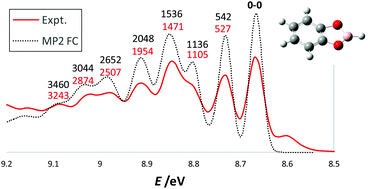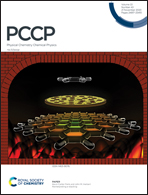Vibrationally resolved valence and core photoionization and photoexcitation spectra of an electron-deficient trivalent boron compound: the case of catecholborane†
Abstract
Compounds containing trivalent boron (TB) as the electron-deficient site(s) find numerous practical uses ranging from Lewis bases in organic synthesis to high-tech industry, with a number of novel applications anticipated. We present an experimental and theoretical study of the gas-phase valence photoionization (VUV-PES), core photoionization (XPS) and photoexcitation (NEXAFS) spectra of a representative TB compound catecholborane (CB). For modelling and assigning the spectra we used the ΔDFT and restricted single excitation space TD-DFT methods for the XPS and NEXAFS, and OVGF and EOM-CCSD for the VUV-PES. The vibrationally resolved structure was computed in the Franck–Condon (FC) and Herzberg–Teller (FCHT) approximations generally resulting in a good agreement with the observed spectral features. For the prediction of core-electron binding energies (CEBEs) several density functionals were tested. The best performance overall was furnished by ωB97X-D suggesting that including the dispersion correction is beneficial. The FCHT vibronic intensities are in clear discrepancy with the B 1s NEXAFS spectrum if the harmonic approximation is used for the B–H wagging mode both in the ground and in the first core-excited state. Instead, a much better agreement is obtained if the excited state potential is approximated to a symmetric double-well. The observed vibronic pattern could be a general fingerprint of the presence of TB centre(s), specifically, the transfer of the (core) density to the vacant boron p-orbital in the excited state.



 Please wait while we load your content...
Please wait while we load your content...